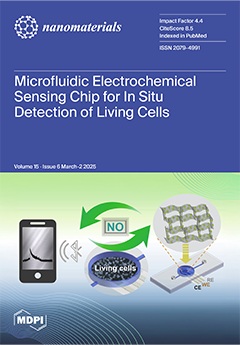The introduction of nitrogen defects in graphitic carbon nitride (g-C
3N
4) has the important effect of improving its photocatalytic performance. This study employs a simple and environmentally friendly one-step pyrolysis method, successfully preparing g-C
3N
4 materials with adjustable
[...] Read more.
The introduction of nitrogen defects in graphitic carbon nitride (g-C
3N
4) has the important effect of improving its photocatalytic performance. This study employs a simple and environmentally friendly one-step pyrolysis method, successfully preparing g-C
3N
4 materials with adjustable N
3C defect concentrations through the calcination of a urea and ammonium acetate mixture. By introducing N
3C defects and adjusting the band structure, the conduction band of the g-C
3N
4 was shifted downward by 0.12 V, overcoming the traditional application limitations of N
3C defects and enabling an innovative transition from enhanced oxidation to enhanced reduction capabilities. This transition significantly enhanced the adsorption and activation of O
2. Characterization results showed that the introduction of N
3C defects increased the specific surface area from 44.07 m
2/g to 87.08 m
2/g, enriching reactive sites, while narrowing the bandgap to 2.41 eV enhanced visible light absorption capacity. The g-C
3N
4 with N
3C defects showed significantly enhanced photocatalytic activity, achieving peak performance of 54.8% for tetracycline (TC), approximately 1.5 times that of the original g-C
3N
4, with only a 5.4% (49.4%) decrease in photocatalytic efficiency after four cycles of testing. This study demonstrates that the introduction of N
3C defects significantly enhances the photocatalytic performance of g-C
3N
4, expanding its potential applications in environmental remediation.
Full article






